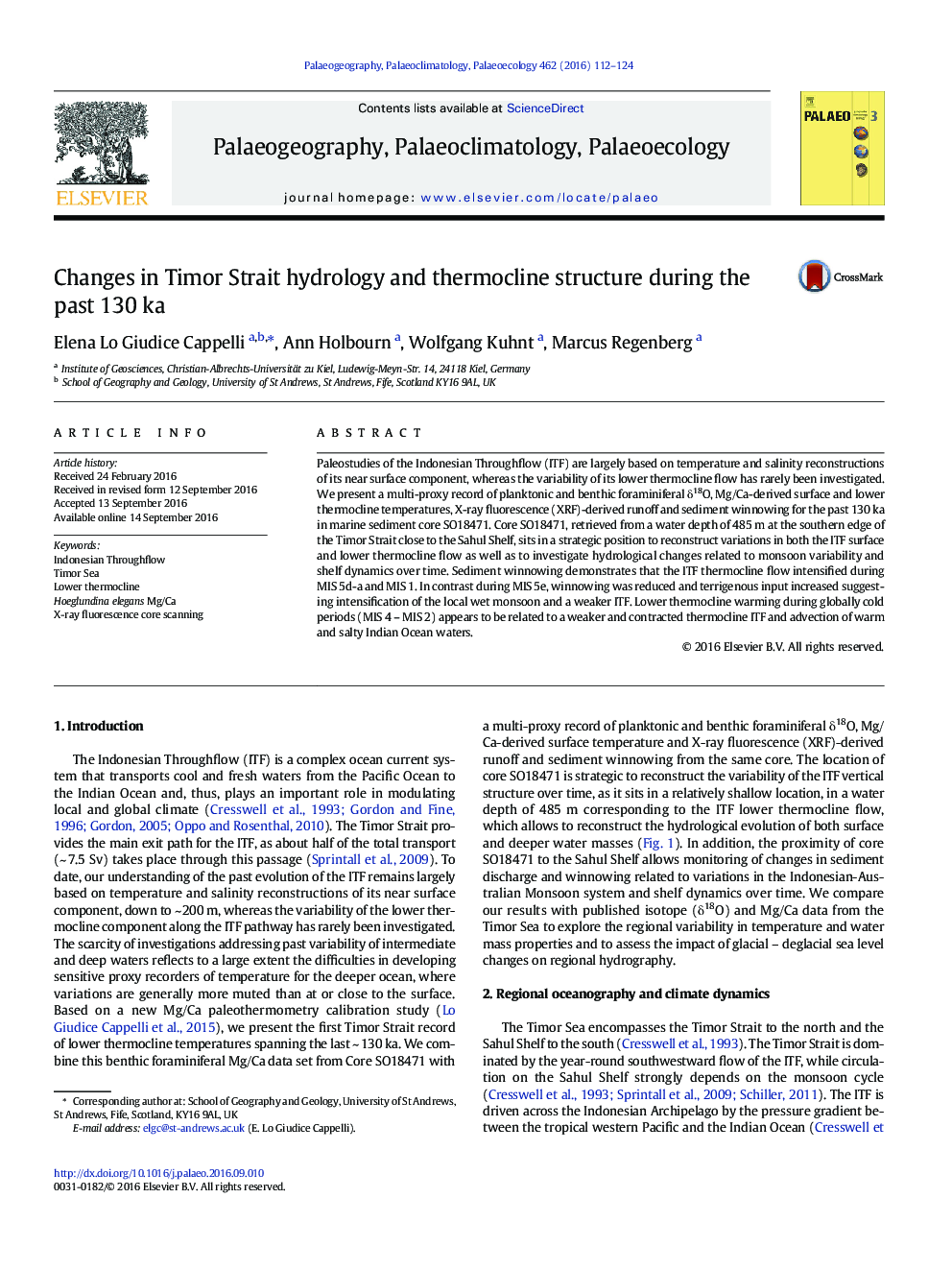| Article ID | Journal | Published Year | Pages | File Type |
|---|---|---|---|---|
| 4465514 | Palaeogeography, Palaeoclimatology, Palaeoecology | 2016 | 13 Pages |
•ITF thermocline flow intensified during MIS 5d-a and MIS 1.•Local wet monsoon strengthened during early MIS 5e.•Glacial thermocline warming reflects reduced ITF and advection of Indian Ocean waters.
Paleostudies of the Indonesian Throughflow (ITF) are largely based on temperature and salinity reconstructions of its near surface component, whereas the variability of its lower thermocline flow has rarely been investigated. We present a multi-proxy record of planktonic and benthic foraminiferal δ18O, Mg/Ca-derived surface and lower thermocline temperatures, X-ray fluorescence (XRF)-derived runoff and sediment winnowing for the past 130 ka in marine sediment core SO18471. Core SO18471, retrieved from a water depth of 485 m at the southern edge of the Timor Strait close to the Sahul Shelf, sits in a strategic position to reconstruct variations in both the ITF surface and lower thermocline flow as well as to investigate hydrological changes related to monsoon variability and shelf dynamics over time. Sediment winnowing demonstrates that the ITF thermocline flow intensified during MIS 5d-a and MIS 1. In contrast during MIS 5e, winnowing was reduced and terrigenous input increased suggesting intensification of the local wet monsoon and a weaker ITF. Lower thermocline warming during globally cold periods (MIS 4 – MIS 2) appears to be related to a weaker and contracted thermocline ITF and advection of warm and salty Indian Ocean waters.
